Ornate pimelodus - Pimelodus ornatus
Scientific name: Pimelodus ornatus
Common name: Ornate pimelodus
Family: Pimelodidae
Usual size in fish tanks: 22 - 32 cm (8.66 - 12.6 inch)
014
Recommended pH range: 6.4 - 7.3
Recommended water hardness: 6 - 20°N (107.14 - 357.14ppm)
0°C 32°F30°C 86°F
Recommended temperature range: 24 - 27 °C (75.2 - 80.6°F)
The way how these fish reproduce: Spawning
Where the species comes from: South America
Temperament to its own species: peaceful
Temperament toward other fish species: aggressive to smaller
Usual place in the tank: Bottom levels
Food and Feeding
Pimelodus ornatus, commonly known as the Ornate Pimelodus, is an opportunistic feeder that will consume nearly any food offered. Due to its voracious appetite, it can overeat to the point of a swollen belly, sometimes going a week without eating afterward.
A well-balanced diet should consist of high-quality sinking catfish pellets, flakes, and frozen or live foods such as brine shrimp, daphnia, and bloodworms. When introducing a new specimen to the tank, offering a few meals of bloodworms can help it settle in more quickly.
Origin and Natural Habitat
Native to South America, the Ornate Pimelodus is found in the Rio Negro Basin in Brazil, one of the most biodiverse aquatic ecosystems. These catfish typically inhabit slow-moving rivers and flooded areas, preferring environments with soft, slightly acidic water and abundant hiding spots created by submerged driftwood and vegetation.
Sexing
There are no known visible differences between male and female Pimelodus ornatus. Like many catfish species, sexing them in a home aquarium setting is challenging.
Breeding
Currently, there are no reported cases of Pimelodus ornatus breeding in captivity. In the wild, Pimelodid catfish are known to spawn in seasonal floodplains, which may suggest that environmental triggers such as rainfall and temperature shifts play a role in their reproduction.
Lifespan
With proper care and stable water conditions, the Ornate Pimelodus can live between 5 to 8 years.
Tank Setup and Compatibility
The Ornate Pimelodus is a bottom-dwelling species that requires a spacious tank with plenty of hiding places. The addition of driftwood, rock caves, and floating plants will help it feel secure.
While generally peaceful toward similar-sized tank mates, it may attempt to eat smaller fish that fit in its mouth. Therefore, it is best housed with robust, medium-to-large fish such as:
- Silver Dollar Fish (Metynnis argenteus)
- Severum Cichlids (Heros severus)
- Oscar Fish (Astronotus ocellatus)
- Firemouth Cichlids (Thorichthys meeki)
Water Parameters
- Temperature: 24 - 27 °C (75.2 - 80.6°F)
- pH Range: 6.4 - 7.3
- Water Hardness: 6 - 20°dGH (107.14 - 357.14 ppm)
- Filtration: A powerful filtration system is necessary to handle their high waste output.
Recommended Aquarium Plants
Since Pimelodus ornatus originates from South America, it is best to include native plants that thrive in similar water conditions. These plants help create a natural-looking habitat while providing shade and hiding spots:
- Amazon Sword (Echinodorus amazonicus) – A hardy, broad-leaved plant that offers shelter and shade.
- Hygrophila Corymbosa – A fast-growing plant that helps oxygenate the water and reduces nitrates.
- Cabomba (Cabomba caroliniana) – A dense, fine-leaved plant that provides cover.
- Echinodorus Tenellus – A great carpeting plant that adds depth to the tank.
Short Description
Pimelodus ornatus is a strikingly patterned catfish that requires ample hiding spaces and a well-maintained environment. While classified as peaceful, it has a predatory instinct toward smaller fish. Providing driftwood, rocks, and floating plants will help create a comfortable setting. With the right tank mates and proper care, this species can thrive in large, well-filtered aquariums.
Pictures
Bought by aqua-fish.net from jjphoto.dk.
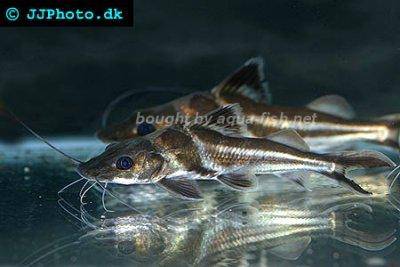


 Jello
Jello 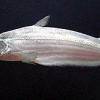 Highwaterman
Highwaterman 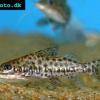 Spotted
Spotted 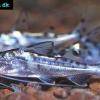 Pictus
Pictus 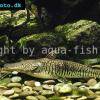 Tiger
Tiger